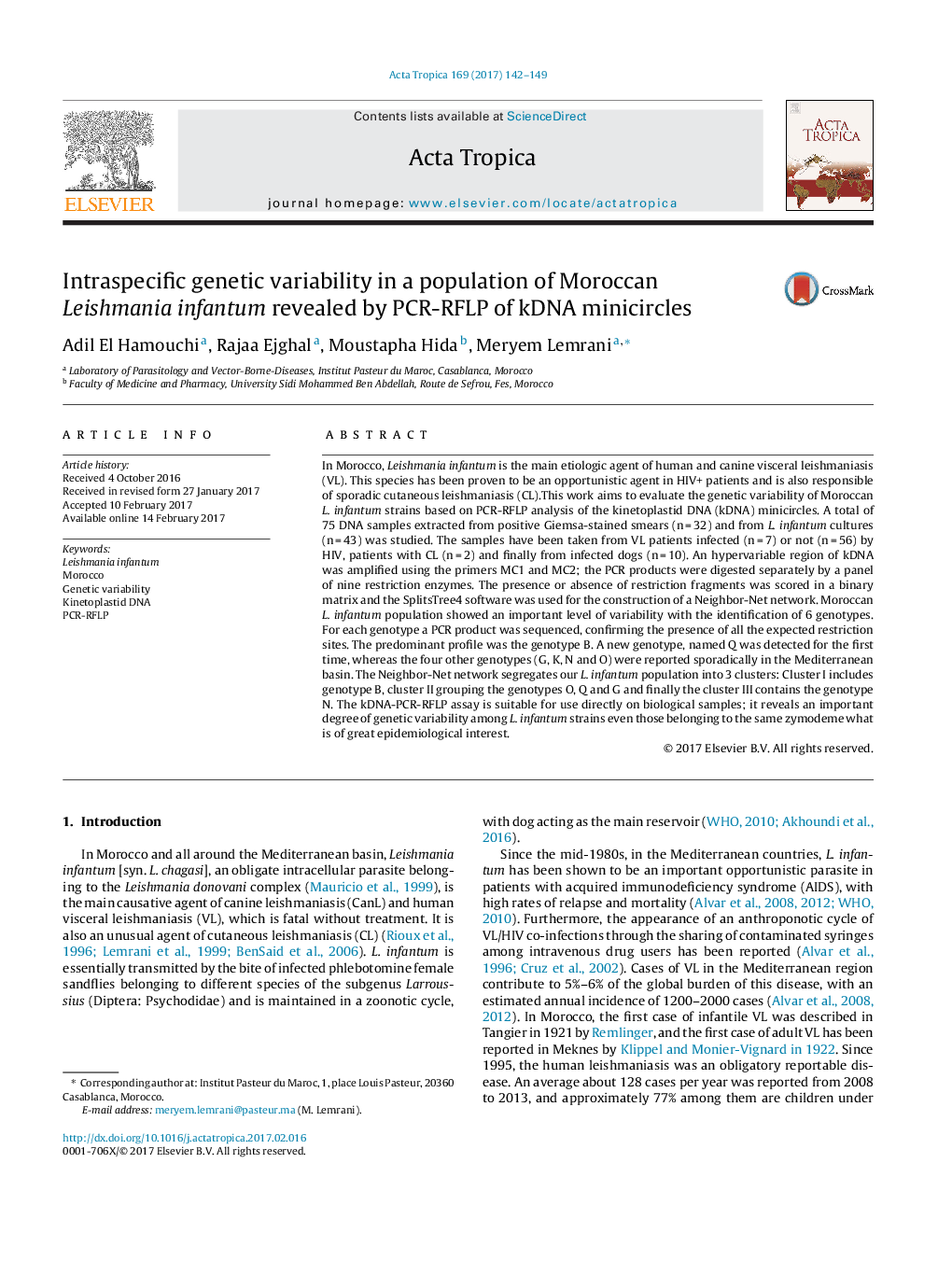| Article ID | Journal | Published Year | Pages | File Type |
|---|---|---|---|---|
| 5670865 | Acta Tropica | 2017 | 8 Pages |
â¢Samples were derived from CL and VL patients infected or not by HIV and from dogs.â¢kDNA-PCR-RFLP was used to study the genetic variability of L. infantum strains.â¢Important genetic variability revealed among Moroccan L. infantum population.â¢Six genotypes identified, within them genotype Q described for the first time.â¢The Neighbor-Net network segregates Moroccan L. infantum stains into 3 clusters.
In Morocco, Leishmania infantum is the main etiologic agent of human and canine visceral leishmaniasis (VL). This species has been proven to be an opportunistic agent in HIV+ patients and is also responsible of sporadic cutaneous leishmaniasis (CL).This work aims to evaluate the genetic variability of Moroccan L. infantum strains based on PCR-RFLP analysis of the kinetoplastid DNA (kDNA) minicircles. A total of 75 DNA samples extracted from positive Giemsa-stained smears (n = 32) and from L. infantum cultures (n = 43) was studied. The samples have been taken from VL patients infected (n = 7) or not (n = 56) by HIV, patients with CL (n = 2) and finally from infected dogs (n = 10). An hypervariable region of kDNA was amplified using the primers MC1 and MC2; the PCR products were digested separately by a panel of nine restriction enzymes. The presence or absence of restriction fragments was scored in a binary matrix and the SplitsTree4 software was used for the construction of a Neighbor-Net network. Moroccan L. infantum population showed an important level of variability with the identification of 6 genotypes. For each genotype a PCR product was sequenced, confirming the presence of all the expected restriction sites. The predominant profile was the genotype B. A new genotype, named Q was detected for the first time, whereas the four other genotypes (G, K, N and O) were reported sporadically in the Mediterranean basin. The Neighbor-Net network segregates our L. infantum population into 3 clusters: Cluster I includes genotype B, cluster II grouping the genotypes O, Q and G and finally the cluster III contains the genotype N. The kDNA-PCR-RFLP assay is suitable for use directly on biological samples; it reveals an important degree of genetic variability among L. infantum strains even those belonging to the same zymodeme what is of great epidemiological interest.
Graphical abstractDownload high-res image (96KB)Download full-size image
